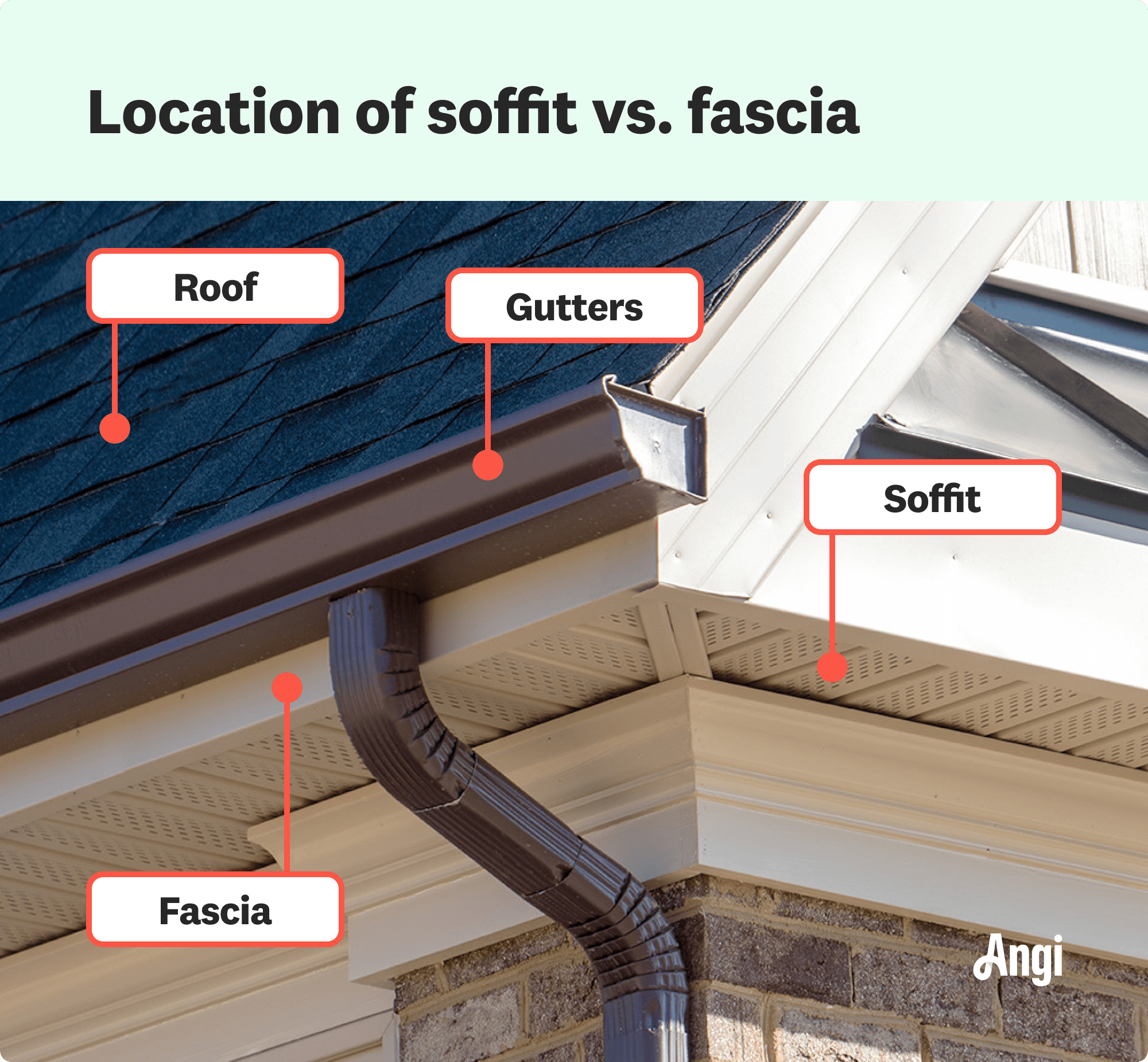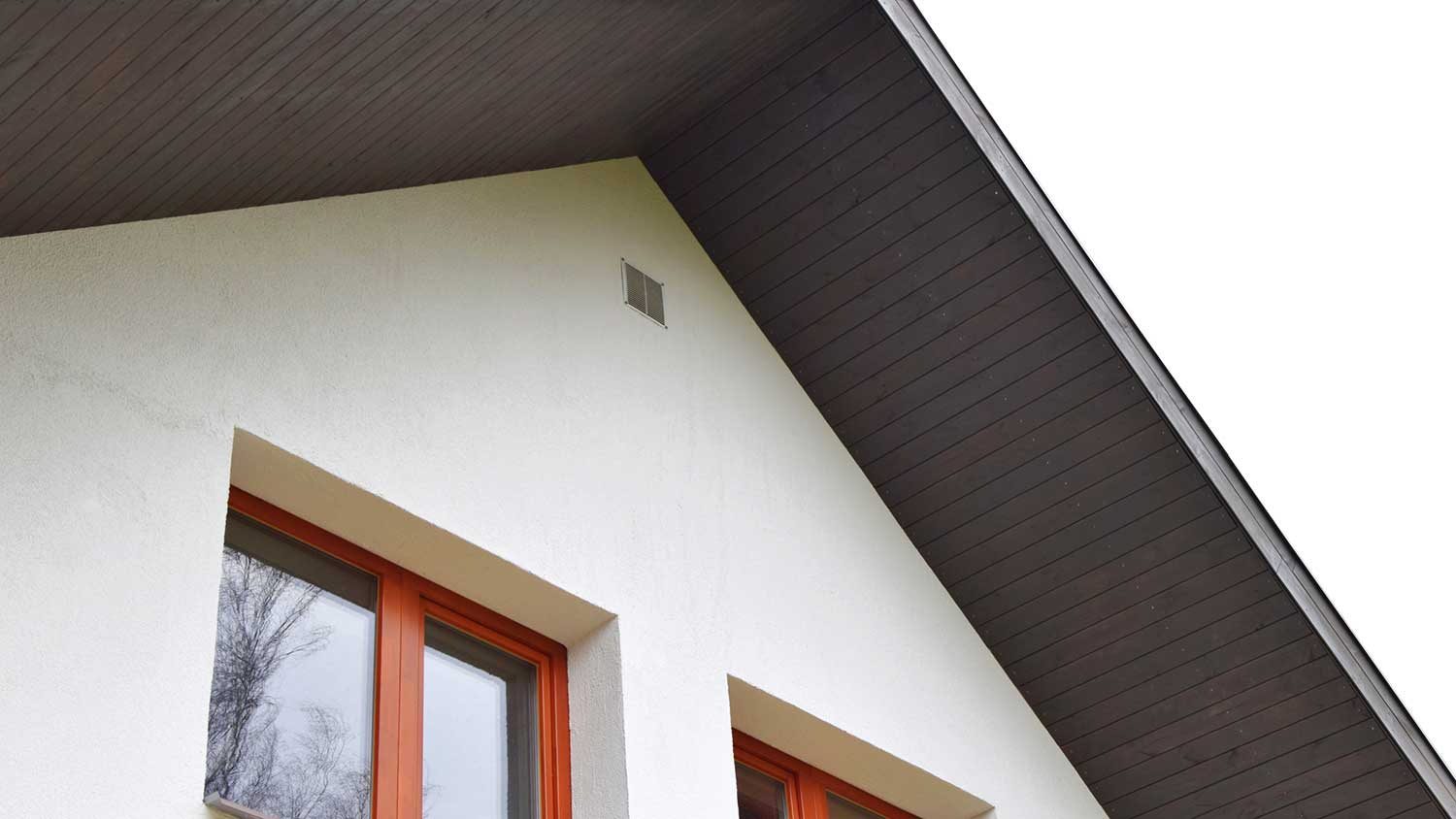Standard Soffit Sizes: How to Choose the Right One
Don’t leave eave protection to chance


Soffits cover the underside of your roof’s eaves and protect the rafters and attic.
Most soffits range between 8 and 20 inches wide and are available in many lengths.
Soffit thickness depends on the material.
You may not know what soffit is, but it’s an important part of your home’s exterior protection. These panels cover the underside of your eaves, where your roof overhangs your home, and protect the eaves, attic, and rafters from damage. Choosing the right soffit size is important to ensure weather hazards stay out and insulated air stays in. Use this guide to help select the right soffit size for your home.
What Is the Standard Soffit Size?

While there is no standard soffit size, most eaves—and therefore most soffits—usually fall within a range of common widths. Shallow eaves, which extend out only a short distance from the home, can be covered with soffits between 8 and 12 inches wide. Moderate eaves require soffit between 12 and 20 inches wide. Some homes with deep eaves may need soffit up to 30 inches wide or more.
Soffit comes in various lengths to suit the project, from just a few inches all the way to several feet long. Long stretches of soffit installation can be accomplished with just a few panels installed next to each other.
Soffit Size by Material

Soffit is available in several kinds of materials, and sizes may vary based on the material type. While width and length are fairly comparable across all soffit materials, the soffit thickness can vary. Most vinyl and wood soffit ranges between 3/8 and 1/2 of an inch thick. Metal soffit measures thickness by gauge and is 22 to 24-gauge metal in most cases.
The type of material you choose for your soffit depends on a number of factors, including your home’s style, ventilation and insulation requirements, local climate, budget, and more. The cost to install wood soffit is less than the cost to install vinyl soffit, with the cost of aluminum soffit having the highest price tag.
| Material | Common Sizes |
|---|---|
| Vinyl | 8–14 in. wide by 1/2 in. thick |
| Metal | 8–20 in. wide by 22–24 gauge thick |
| Wood | 8–24 in. wide by 3/8–1/2 in. thick |
How to Measure the Right Size Soffit
When measuring for the right size soffit, you want to ensure that the entire underside of the eave is covered, from where the eave meets the house all the way to the fascia, without any gaps or spaces. Account for any trim or extra-thick eaves to prevent installing a too-wide soffit.
If you’re looking to install or replace large amounts of soffit, you may want to hire a roofer who’ll take precise measurements and install the correct size soffit. A local roofer will have plenty of experience installing soffits that are exactly the right fit.
Factors That Influence Soffit Size
While soffit size varies from home to home, some factors will affect the right size for your project.
Material
The material soffit you choose may influence the size you need. For example, when deciding on vinyl vs. aluminum soffit, you may not need as much aluminum soffit, since it’s a more malleable material that can fit into tighter spots. Wood is the least flexible, so it may take more material for a good fit.
Eave Width
Wider eaves need wider soffit, and different architectural styles feature different size eaves. Matching the soffit width to the eave width is important to ensure your soffits function properly.
Soffit Placement
Eaves that overhang the first floor of a house may be wider than eaves on upper levels in order to provide more cover for walkways and other areas surrounding the house at ground level. Your home may require different soffit sizes depending on where the eaves they cover are located, so it’s important to measure each section for an accurate fit.
What to Do if You Have the Wrong Size Soffit
The wrong size soffit can interfere with attic ventilation, lead to rafter rot, and allow pests and animals access into your home. It can also cause drainage issues and lead to mold and mildew growth in the attic. When it comes time to install or replace your soffits, make sure that the cost of soffit replacement or installation includes accurate measurements, so you know your soffit will provide the protection your home needs and the aesthetic look you want.





- Roofers
- Metal Roofing
- Roof Repair
- Roof Inspection
- Vinyl Siding Repair Contractors
- Flat Roofing Companies
- Commercial Roofing
- Emergency Roofing Companies
- Leaky Roof Repair
- Metal Roof Repair
- Business Roof Repair
- Flat Roof Repair
- Tile Roof Repair
- Slate Roofers
- Rubber Roofers
- Roofing & Siding
- Metal Roof Installation
- Affordable Roofing
- Roof Sealing
- Attic Ventilation Contractors










